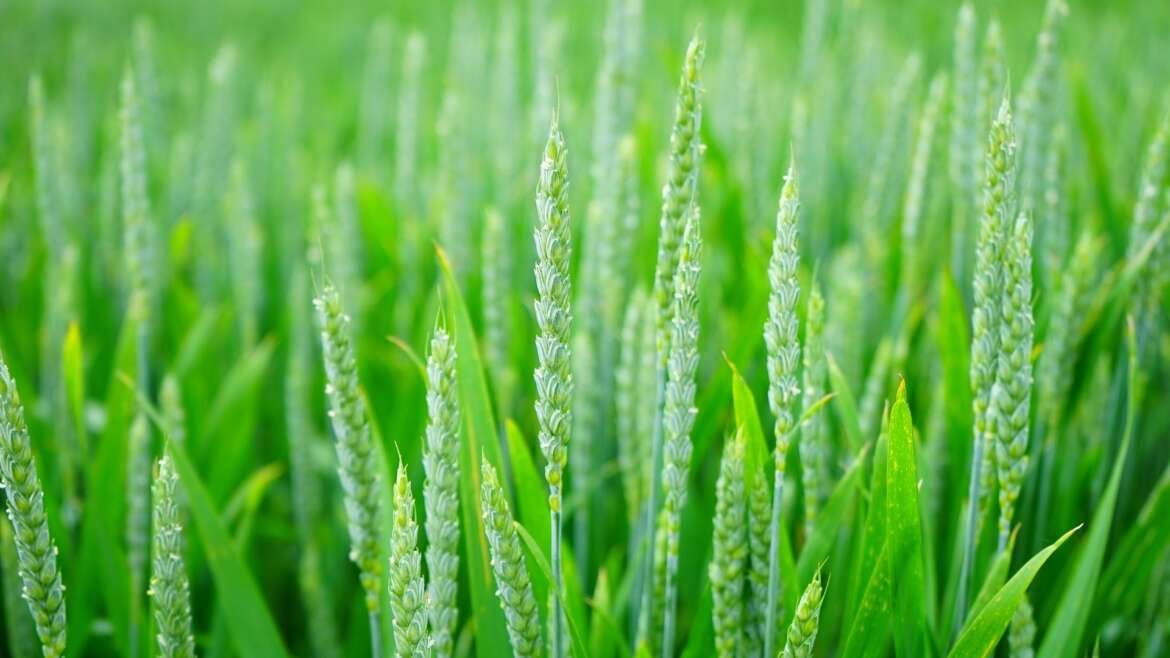While many farmers grow wheatgrass for animal feed, more and more people are buying it or growing it themselves to incorporate into their diets. It is harvested at an early stage of development, usually 7 to 10 days after harvesting. The young shoots of the wheat plant may look like grass in your front yard, but they are packed with nutrients that may provide important health benefits.


Health Advantages For years, health food enthusiasts have discussed the health benefits of wheatgrass. While more research is needed to back up the claims, studies show that young wheat may have several important benefits. Wheatgrass contains few calories but a lot of nutrients, including antioxidants like glutathione, vitamin C, and vitamin E. Antioxidants combat free radicals in the body, lowering oxidative stress and protecting against diseases such as arthritis, cancer, and neurodegenerative diseases.
Wheatgrass has the following health benefits:
Cancer Avoidance Wheatgrass’ antioxidant properties may aid in cancer prevention. According to some studies, it can aid in the death of cancer cells. The majority of these studies are conducted in test tubes. More research is needed to prove wheatgrass’s anti-cancer properties. According to one study, wheatgrass may help to reduce the negative side effects of traditional cancer treatments. More research is required once again.
Combats Infections
Wheatgrass contains chlorophyll, which has antibacterial properties. When applied to the skin, it may aid in the treatment of burns and lesions by preventing infection. Some research also suggests that drinking wheatgrass juice may aid in the treatment of antibiotic-resistant infections.
Lowering Cholesterol Levels
Several studies have shown that wheatgrass has the potential to help lower cholesterol levels, which can then help lower your risk of heart disease. However, the only studies available right now are animal studies. According to one study, wheatgrass can lower LDL cholesterol and triglycerides in the same way that atorvastatin, a common cholesterol-lowering medication, does. While the results are promising, human studies are required to determine whether wheatgrass has an effect on cholesterol levels.
Reduces Inflammation
According to some studies, wheatgrass may help to reduce chronic inflammation, lowering your risk of developing conditions such as heart disease and cancer. One small study discovered that drinking half a cup of wheatgrass juice every day for one month reduced bleeding in people with ulcerative colitis. Other laboratory studies indicate that the chlorophyll in wheatgrass may aid in the reduction of inflammation in the body.
Helps with Healthy Digestion
Wheatgrass contains enzymes that aid digestion by assisting your body in breaking down food and absorbing nutrients. Drinking wheatgrass juice may also aid in detoxification, resulting in less bloating, gas, and stomach upset.
Blood Sugar Control
According to some research, wheatgrass juice may help to regulate blood sugar levels and help diabetics keep their blood sugar levels under control. Because these studies were conducted on rats, more research with humans is required to determine whether there is an actual link between wheatgrass and blood sugar management.
Cognitive Function May Improve
Wheatgrass may have neuroprotective properties, which means it may aid in cognitive function and reduce the risk of conditions such as Alzheimer’s disease.
Nutrition
Wheatgrass is frequently referred to as a superfood. It contains numerous essential vitamins, minerals, antioxidants, and other nutrients that are beneficial to one’s health. Wheatgrass contains the following nutrients:
Vitamin A
Vitamin C
vitamin E
The vitamin K
Vitamin B
Calcium
Iron
Magnesium
It is also high in enzymes, phytonutrients, and chlorophyll.
Per Serving Nutrients A 1-ounce serving of wheatgrass juice contains the following nutrients:
10 calories
2 gramme protein
0 gramme fat
2 gramme carbohydrate
0 gramme fibre
2 gramme sugar
Things to Keep an Eye Out For Wheatgrass is generally safe to consume. However, there are a few things to keep in mind:
Concerns About Pregnancy Wheatgrass grows in soil or water and is eaten raw. As a result, it may contain bacteria that are harmful to a developing baby. Wheatgrass should be avoided by pregnant or breastfeeding women.
Gluten Issues Wheatgrass is the newly sprouted wheat plant. Nonetheless, they are gluten-free. Gluten is found in wheat plant seed kernels, not wheatgrass. If the grass is cut at the proper time, there should be no gluten. However, there is a risk of cross-contamination, so if you are gluten-sensitive, make sure your wheatgrass comes from a gluten-free producer.
It is not a substitute for regular medical care. While there is plenty of anecdotal evidence that wheatgrass can help with a variety of health issues, it should not be used in place of conventional medical care. Always consult your doctor first if you have any health concerns.
Wheatgrass Application
Fresh wheatgrass can be found in the produce section of most supermarkets, or it can be grown at home. You can juice the blades to make a 1 to 2 ounce shot, or you can add the juice to your favourite smoothie or juice. Wheatgrass powder or capsules are available in some grocery stores and many health food stores. The powder can be mixed into smoothies and juices, or the capsules can be taken with a glass of water.


Add Comment